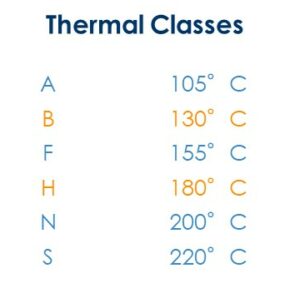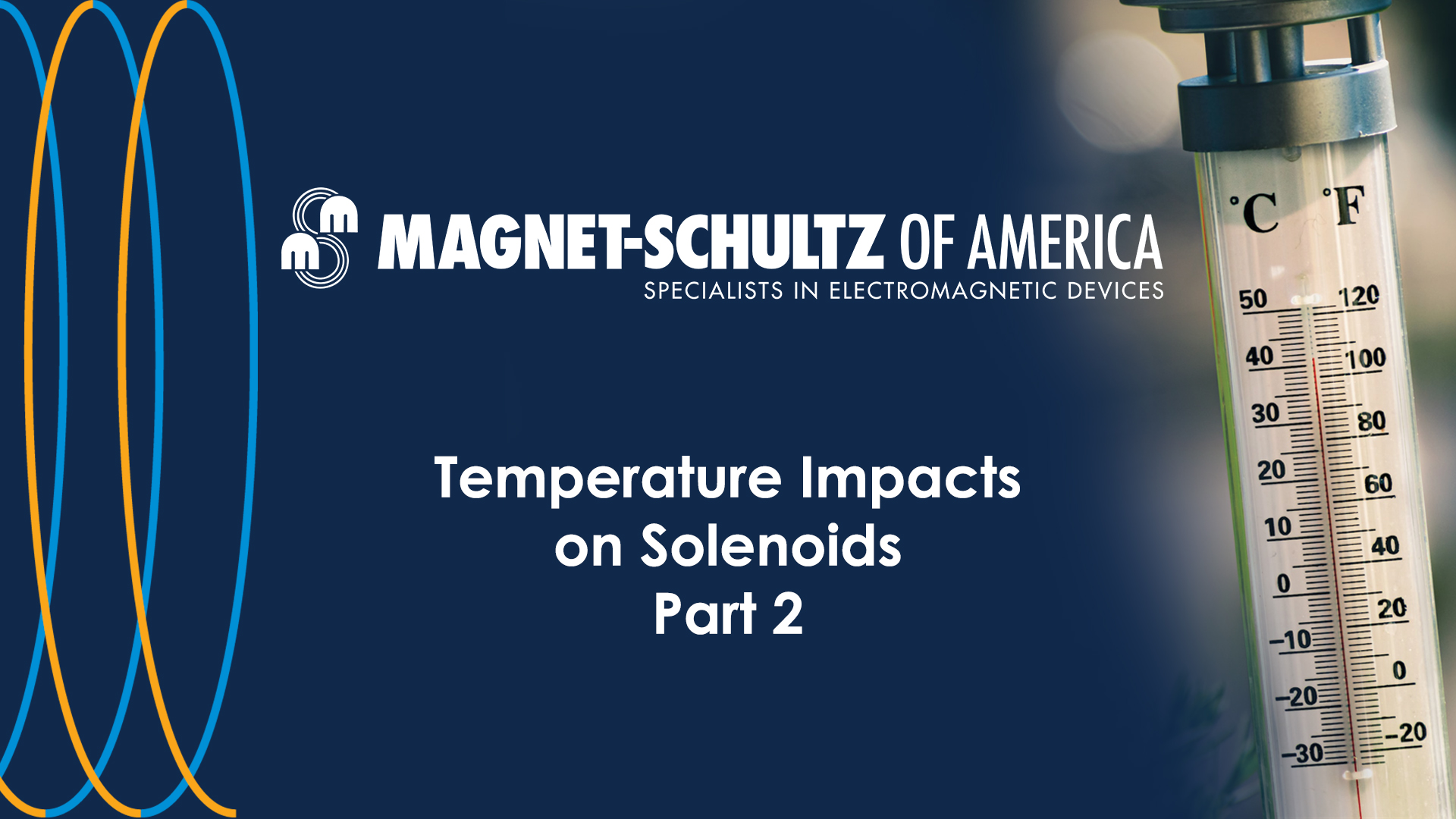Temperature Impacts on Solenoids – Part 2
In our last blog, we learned about the different ways temperature impacts the design of a solenoid and the importance of understanding requirements up front to ensure our customers have success and achieve optimal performance within the dimensional and technical requirements of their applications. Solenoids do work. Therefore, when electric energy goes into the solenoid, heat energy comes out of the solenoid. This is the reason solenoids get hot. When the temperature of a solenoid rises, the current is reduced, and consequently, the magnetic force of the solenoid is also reduced.
Today, we will focus on the effect of temperature on the duty cycle of a solenoid as well as understanding what thermal classes are and how this is determined for each unique project.

As temperature affects force, it also has an effect on the duty cycle (i.e. on time vs off time) of solenoids. Not all applications are continuous duty. To limit the amount of raw materials used in the product, coils can be wound with a lower resistance or higher wattage. The higher power coils of the same size can offer anywhere between 5-10x’s the magnetic performance. However, these electromagnetic devices must first be allowed to cool down after each use. For these applications, a maximum on-time and a minimum off-time must be specified to ensure success. This typically varies depending on each customer’s unique application and requirements. There are also electronic methods of limiting the heat generated by a solenoid and these will be discussed in detail in a future blog.

The International Electrotechnical Commission (IEC) defines various thermal classes which define the limits of the maximum operating temperature. Many times, customers complain that the solenoid is hot to the touch, and though this may be the case, it’s important to note that it actually is not very hot based upon the insulation materials used in solenoid manufacturing. At Magnet-Schultz of America, we typically design solenoids for class B or H, but this is very dependent on each customer’s specific application. The higher temperature design will have a slightly higher cost profile, so understanding the environment helps us assure that we do not “overdesign” the solenoid for a temperature that the unit will never see. That allows us to keep the cost of the product lower.

We hope you found the information shared on this blog useful. We welcome your temperature-challenging application and look forward to discussing the electromagnetic device that’ll provide the solution you need to satisfy your customers. Contact us today to learn how we can help you with your next project.







Leave A Comment